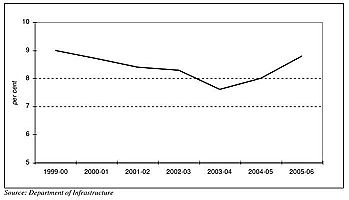Tonight I attended the first Heatherdale Community Action Group meeting for 2008. The action group represents the residents and businesses along Heatherdale Road, a community which is split between the two municipalities of Maroondah and Whitehorse.
The guest speaker for tonight’s meeting was Matthew Guy, the Shadow Minister for Planning. Matthew listened intently to the concerns of the community particularly in regard to the deficiencies that currently exist under State legislation. In particular there is a need to strengthen the Environmental Protection Authority, so that they act upon the noise, dust and amenity complaints that are being received.
The EPA has wider scope to investigate these matters than local councils. While Maroondah has sought two successful prosecutions in regard to noise issues, the EPA is able to investigate these matters and seek genuinely punitive measures. Unfortunately the current Helath Act prevents councils from fining a company more than a $1000 a day for matters that are declared a nuisance. The EPA does not have such limitations and must finally take an interest in this matter. It is unfortunate that when the EPA did act, it awarded Manningham Council the fines that were successfully levied against Southern Rocycling, despite the fact that Maroondah City Council had attempted to work closely with the EPA in regard to these amenity issues.
Planning scheme definitions were also discussed, since this is a matter that directly affects Heatherdale Road. Currently a waste transfer facility does not require a permit within an industrial zone and this hampers the enforcement of effective hours of operation. This is in contrast to a recycling facility, which does require a permit and hence allows councils to impose suitable conditions on these operations. The State planning scheme definitions must be reviewed so that councils are able to protect the amenity of the local community.
The State Government has stated it will review both the Health Act and the defintions defined in the Planning and Environment Act. Unfortunately both initiatives seem to have stalled, Matthew Guy as the Shadow Minister for Planning can assist in ensuring that the State Government honours this commitment.
